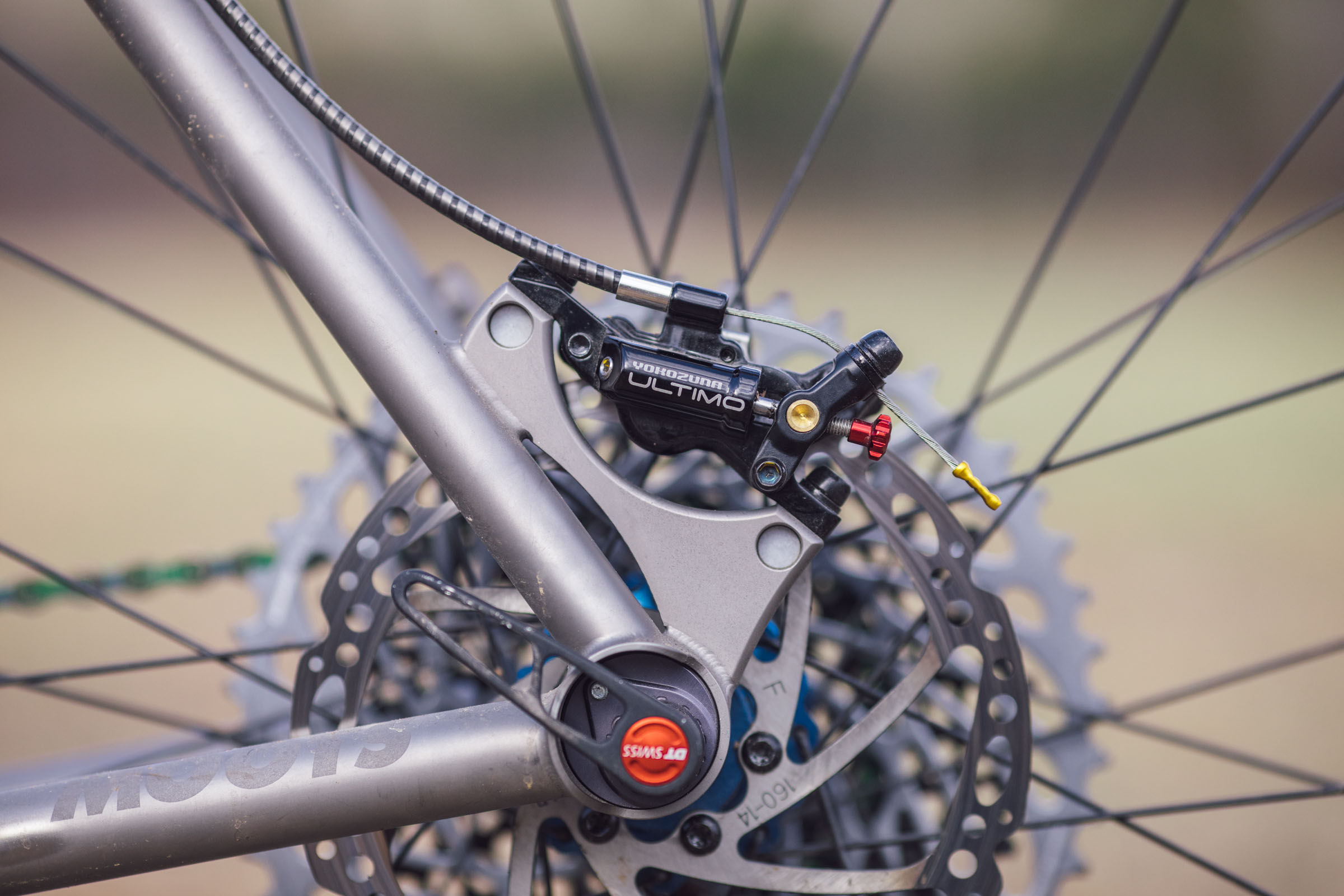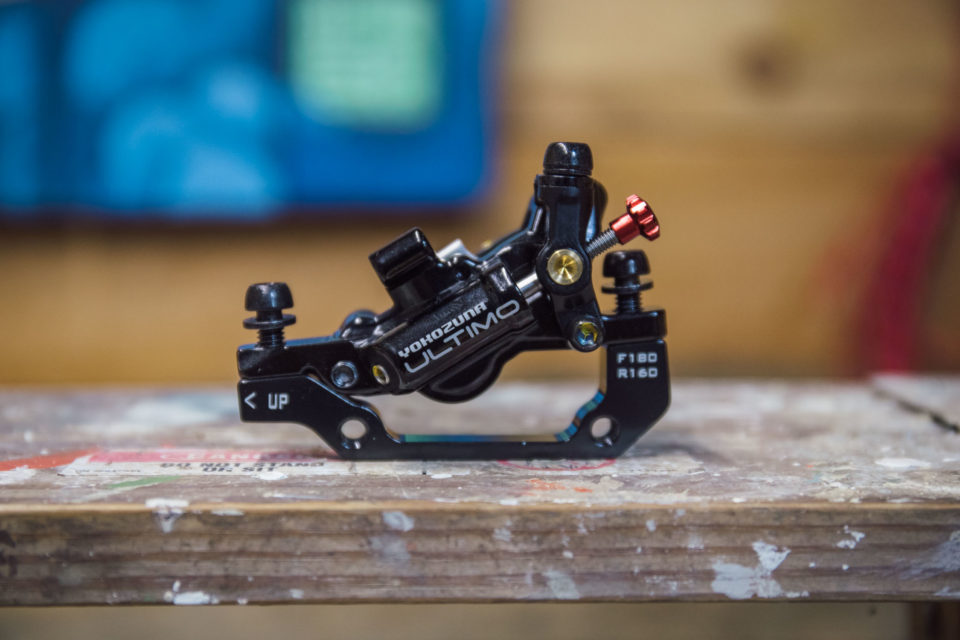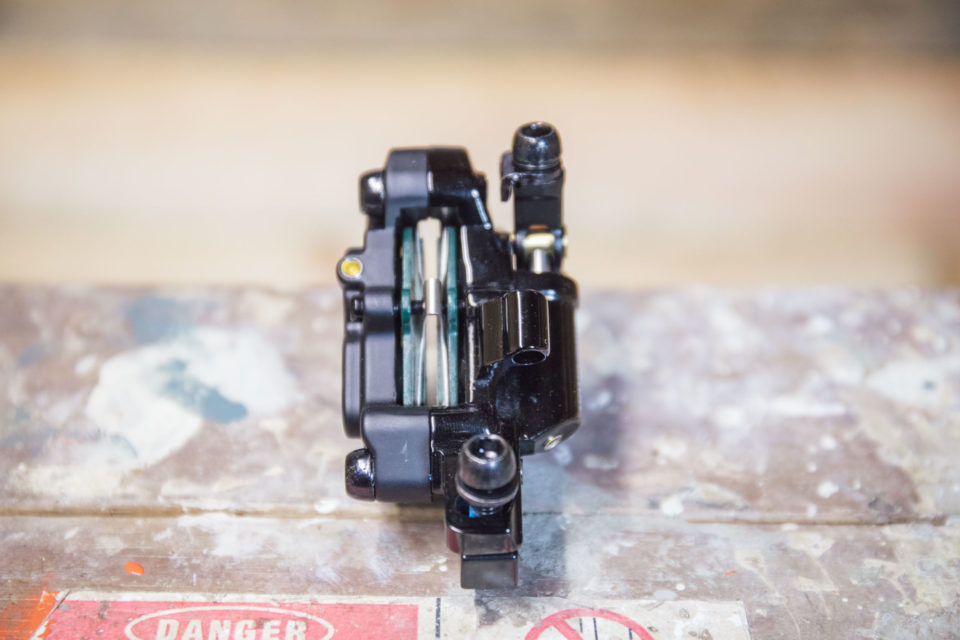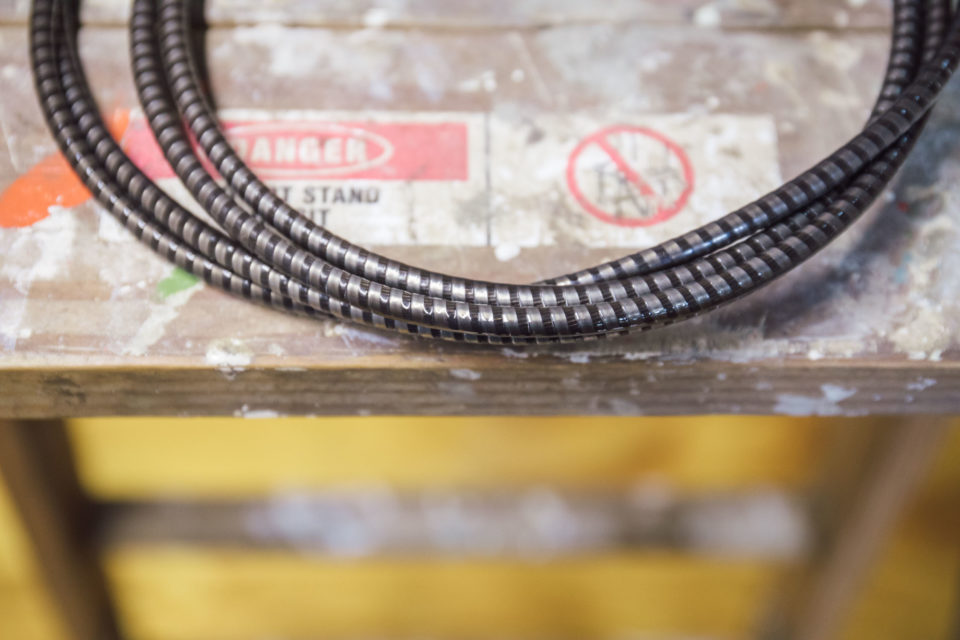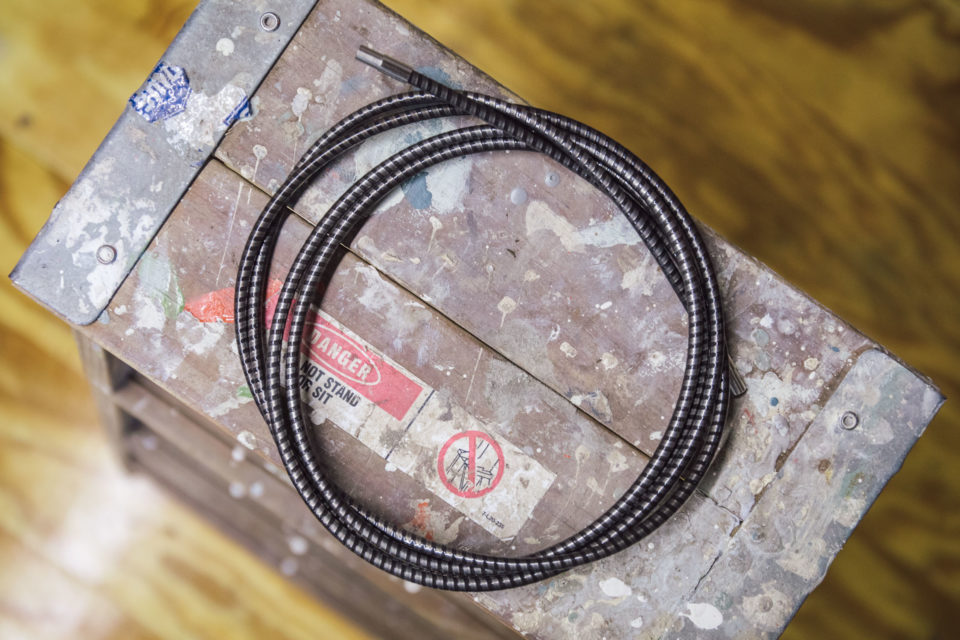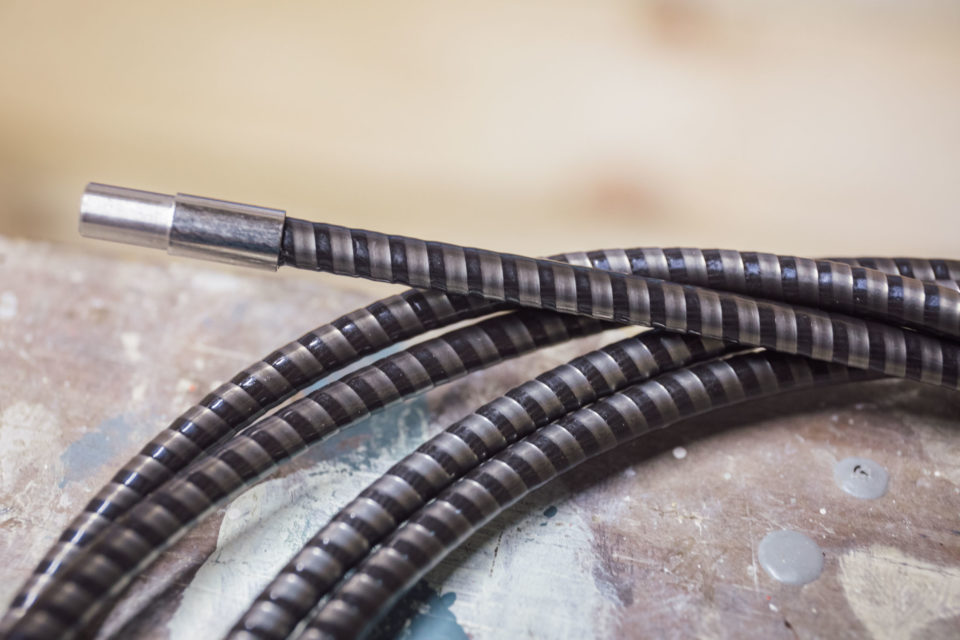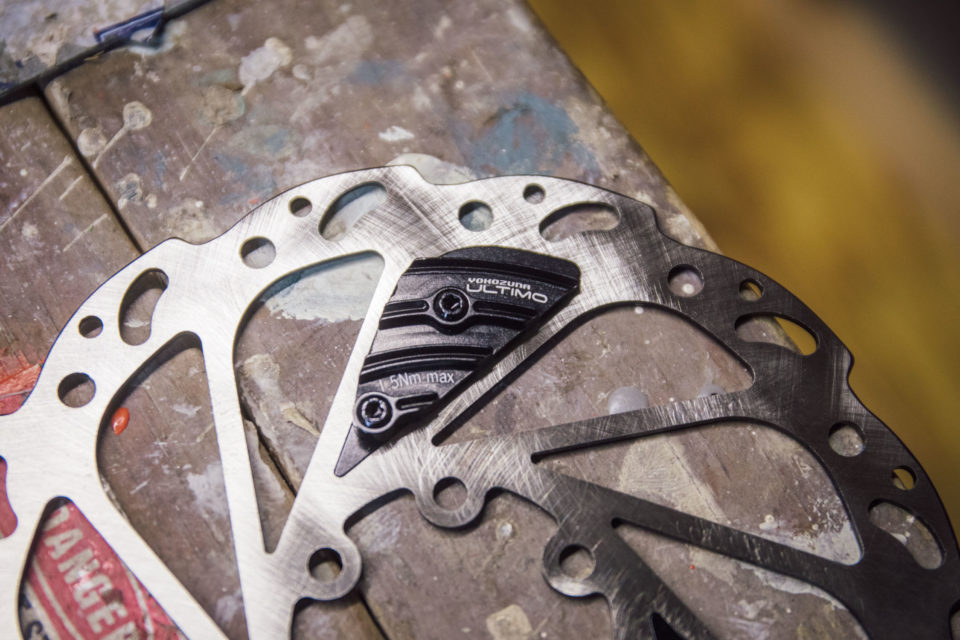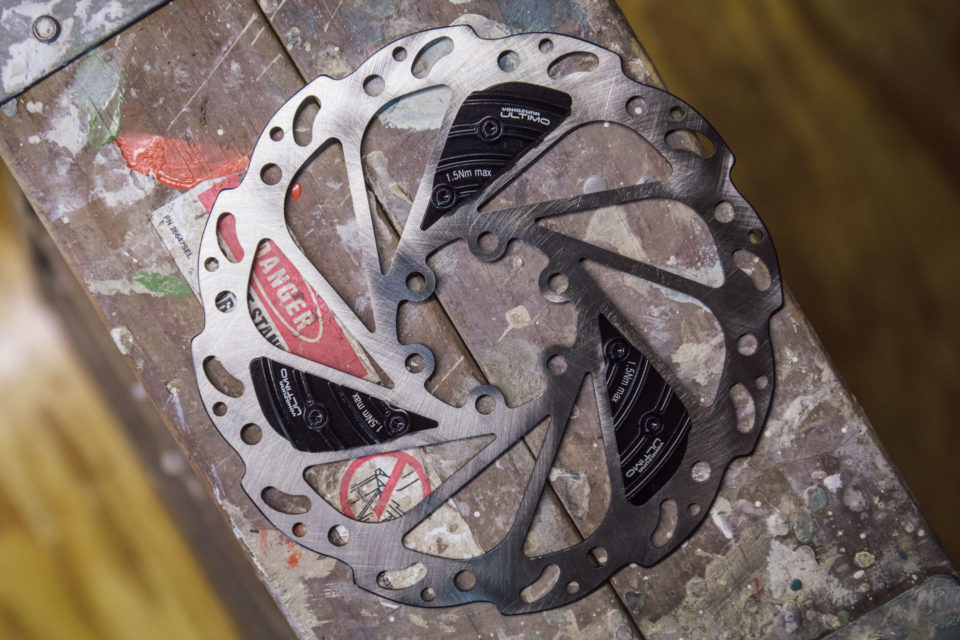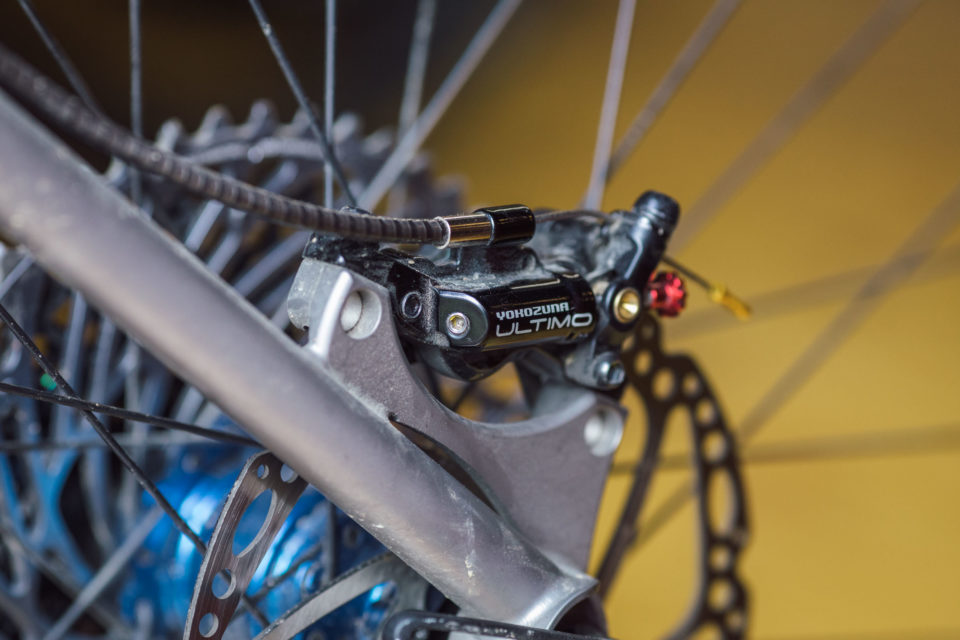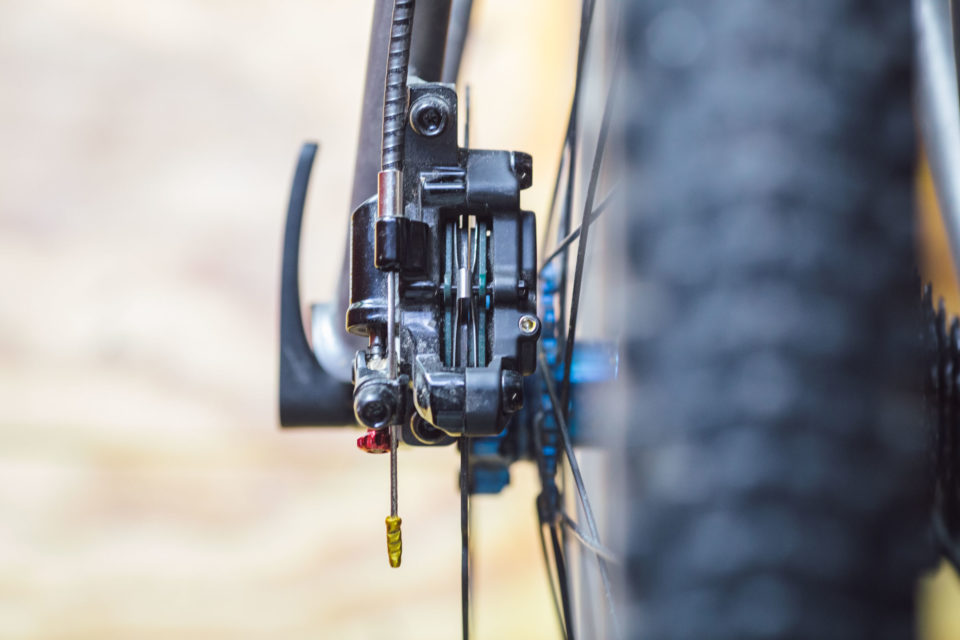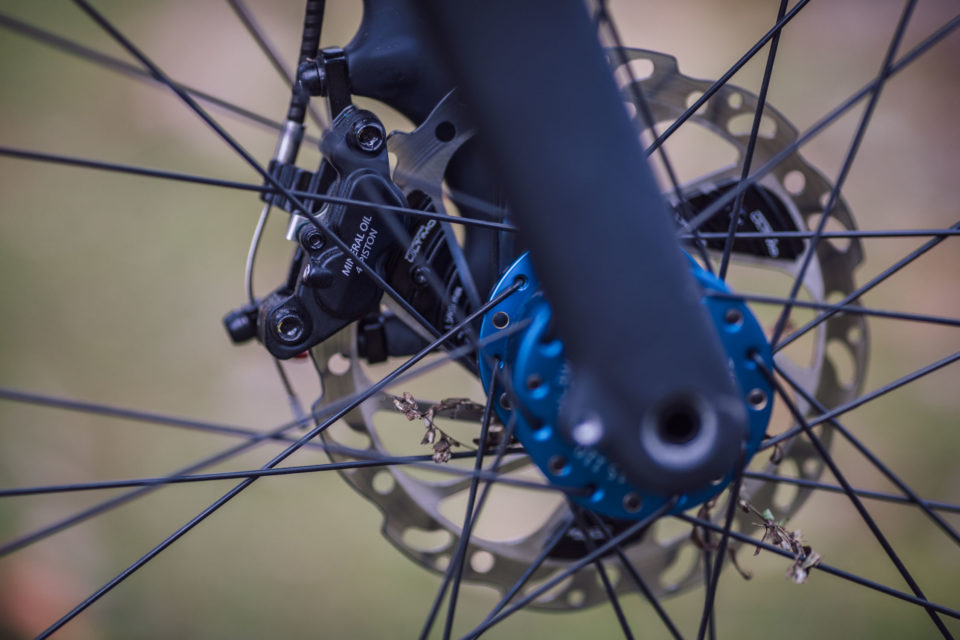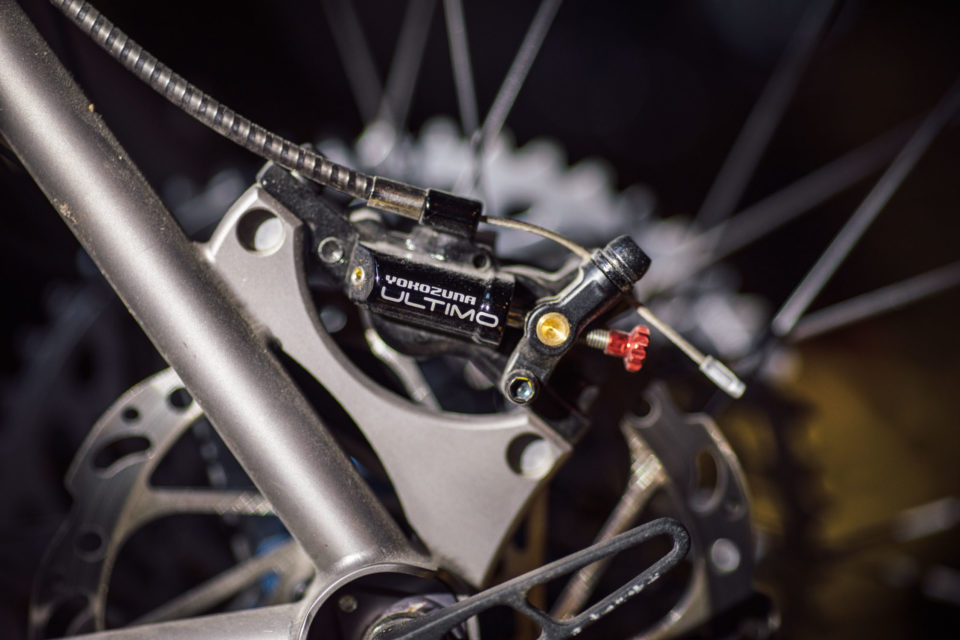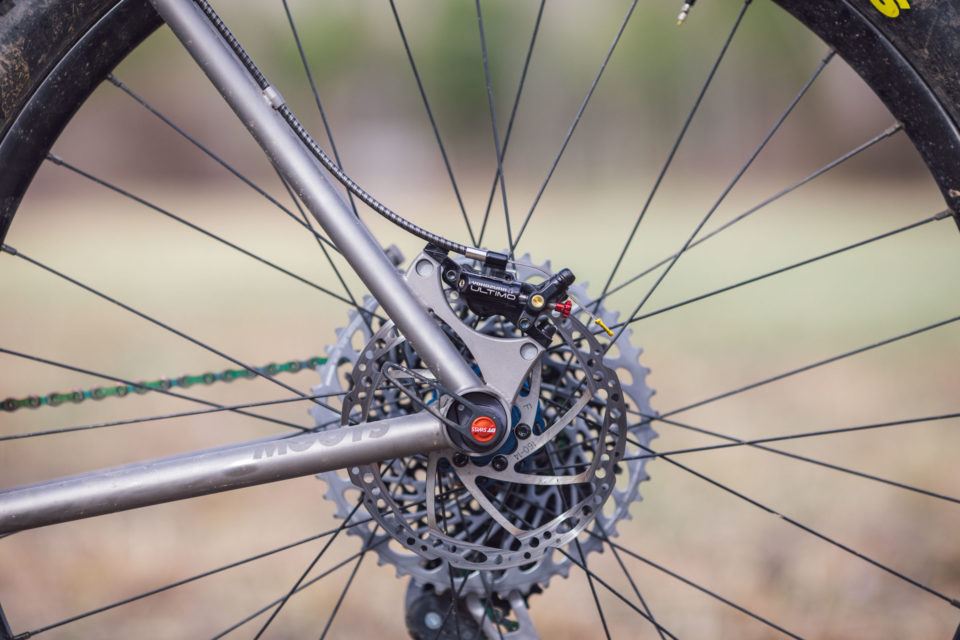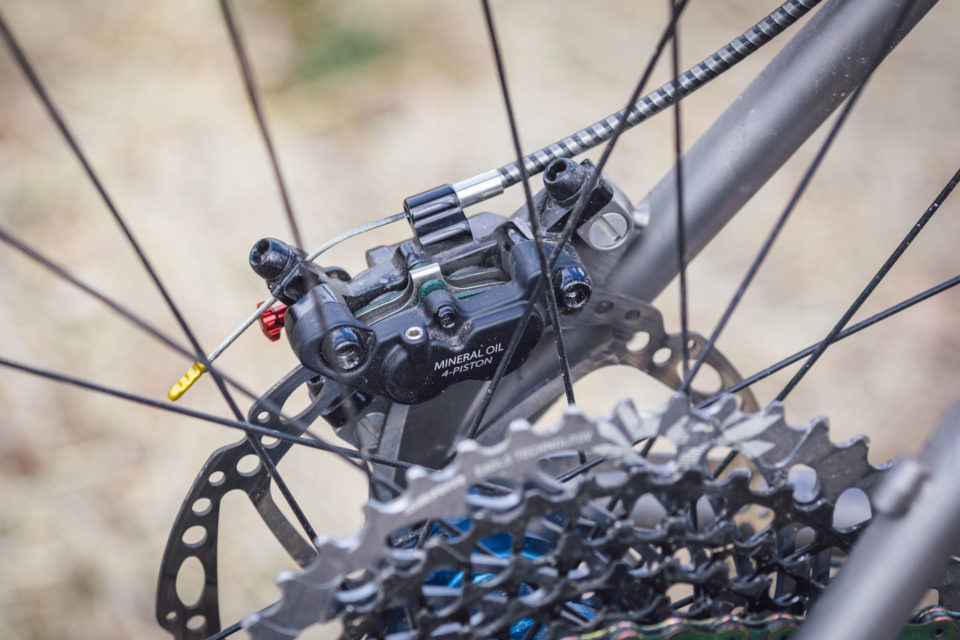Yokozuna Ultimo Brakes Review: Mechanical + Hydraulic
Share This
The Yokozuna Ultimo is a hybrid brake for drop-bar bikes that uses standard metal cables to engage a fully contained hydraulic caliper. With a four-piston design, Ultimo brakes promise all the stopping power and modulation of a full-hydraulic system, without the installation headaches and complexities that come with it. We’ve been testing a pair for several months for this review…
It’s hard to argue that hydraulic brakes aren’t the most hand-friendly braking option for drop-bar bikes if you can dismiss the risks, intricacies, and extra cash required for hydraulic levers. They’re easier to pull with one or two fingers, and they offer superior stopping power and modulation, which is especially important for dirt drop-bar bikes where efficient leverage keeps the terrain in check and your hands from becoming overworked. Not even the best mechanical brakes can compete.
That said, there are a few frustrating drawbacks that accompany full hydraulic brake systems. For one, running cables and moving brakes between bikes is a pain, especially when internal cable routing is involved. Then there is the reliability question—at this point, we’ve heard a couple of horror stories about hydraulic brakes dying in some far-flung place where bleed kits and modern bike shops are essentially nonexistent. Cable-actuated Yokozuna Ultimo brakes are designed to counter these issues with a closed hydraulic system that is completely contained within the caliper. I’ve been testing this pair for several months to see what makes them tick.
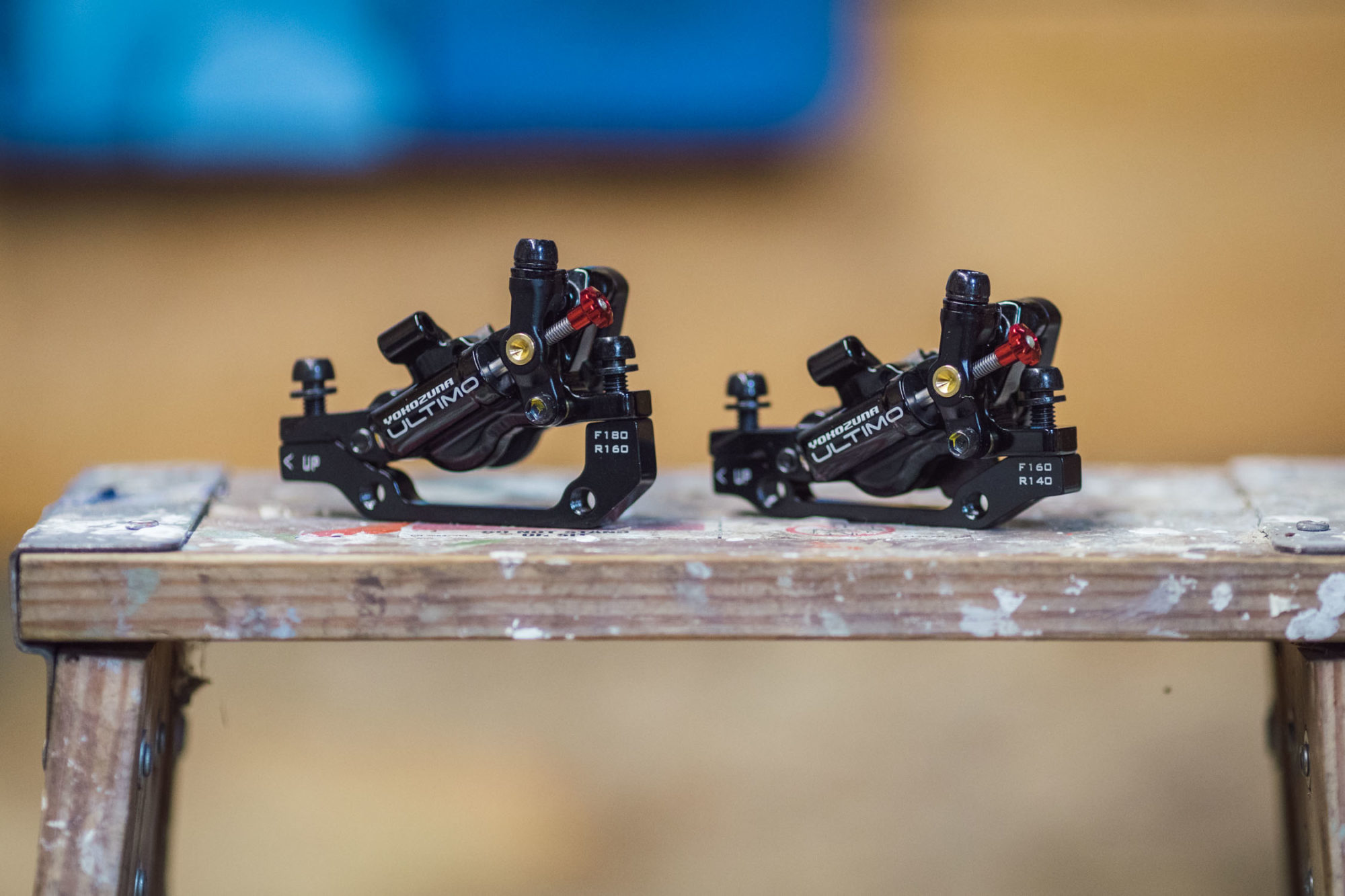
Cable-Actuated Hydraulic Brakes
The benefits of hydraulic components are obvious, but for touring cyclists it’s hard to overlook the risks, limitations, and restrictions they might pose. Namely, hydraulic specific controls are required, which are by their very nature more complex and expensive than cable-pull levers. Then there’s the need for periodic fluid bleeding for optimum performance. And long fluid-transporting cables span the length of the frame and can be subject to irreparable damage. Cable-actuated hydraulics blend the best of both worlds by using standard cable and housing to engage hydraulic mechanisms that are completely contained within a component. This mitigates the risk of cable damage and allows the use of standard cable-pull levers.
These days, cable-actuated hydraulics are the most prevalent and reliable design for dropper posts. But the same methodology hasn’t been widely adopted for brakes, even though companies have been tinkering with the idea for nearly a decade. One of the first brands to successfully utilize this design was TRP, which announced the Hy/Rd in 2013 using a symmetrical dual-piston design. A couple other companies have released similar products, including Taiwanese Juin Tech with the R1, a brake that’s nearly identical to the Motoko, the first mechanical hydraulic brake by the Japanese-US brand Yokozuna.
Yokozuna has been around for a while and is best known for their brake pads and Reactor cable housing, which they’ve been making since the mid-2000s. With over a decade under their belt, Yokozuna later entered into the component market with the aforementioned Motoko, a dual-piston cable-actuated/hydraulic road disc brake that was released and well received in 2017. In late 2018, the Japanese/US company introduced the Ultimo, a brake built around four coated pistons designed to produce more stopping power than the Motoko without a huge increase in caliper weight.
Admittedly, I don’t have any experience with the TRP model or the Motoko, but both are fairly well reviewed and are a little less expensive than the Ultimo. The TRPs go for $100-125 and the Motokos for $140-180, depending on whether you need flat mount or post. On that note, the Ultimo is only available in ISO/post mount; there’s no flat mount option at the moment, although I heard it was coming soon. It’s also worth mentioning that the TRPs are bulkier and substantially heavier than the Ultimos—each Hy/Rd caliper is about 100 grams heavier than the 139-gram Ultimo. The Ultimo’s main differences from the Motoko is that it has four pistons instead of two, larger brake pads, and is a hair lighter.
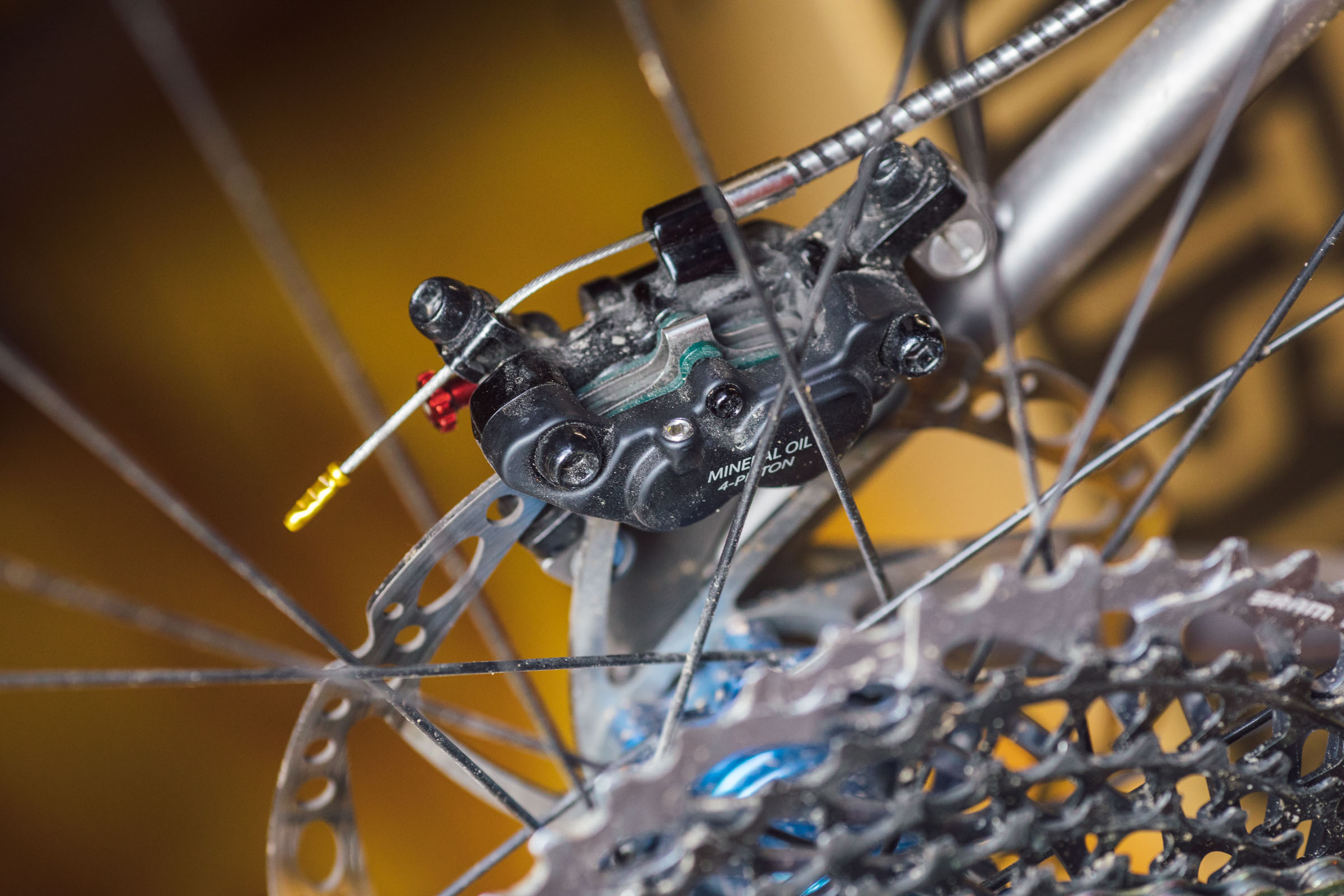
Yokozuna Ultimo Brake Kit
The Yokozuna Ultimo is marketed as a “reliable disc brake for CX, road and gravel.” As mentioned, all of the hydraulics are self-contained in the 74mm four-piston caliper shell, which is fairly svelte. The shells are fully sealed with a mineral oil based “closed” hydraulic system, meaning they do not require regular bleeds. This makes them an interesting option for touring cyclists and gravel bikepackers who generally have a much lower risk tolerance and would normally brush off the idea of using hydraulics while riding far afield. Even so, they are still light and high performance enough for CX, gravel racing, and more competitive-minded riders.
The closed system also means that the pads are not self adjusting like other modern hydraulic brakes. However, by way of a simple red knob at the rear of the caliper, the pad adjustment is as simple as a twist or two of the knob, which is easier done than on any mechanical brakes I’ve used—the easiest probably being the PAUL Klamper. Otherwise, the Yokozuna Ultimo calipers are similar to mechanical calipers in that they’re compatible with any cable-actuated road brake lever.
Bleeding Yokozuna Ultimo Brakes
One thing to note, according to Yokozuna, cracking them open to bleed will actually void the warranty. This is a bit odd since there’s actually a bleed port on the inside top, and what appears to be an additional drain port at the front of the piston. This implies that a bleed can be performed via two syringes. The Ultimo uses mineral oil, so an “on the road” bleed could be a handy procedure to know. My plan is to continue testing these brakes, bleed them when they need it, and update this post accordingly.

The Yokozuna Ultimo isn’t cheap, but the kit includes everything you need except a lever and all the bits and pieces seem very high quality. For $199 you get one forged caliper, a set of Saint/Zee D-type brake pads, caliper mounting bolts/IS hardware, a 6-bolt 160mm stainless steel rotor with removable heat sinks, and Yokozuna Reaction, their premium compressionless cable system.
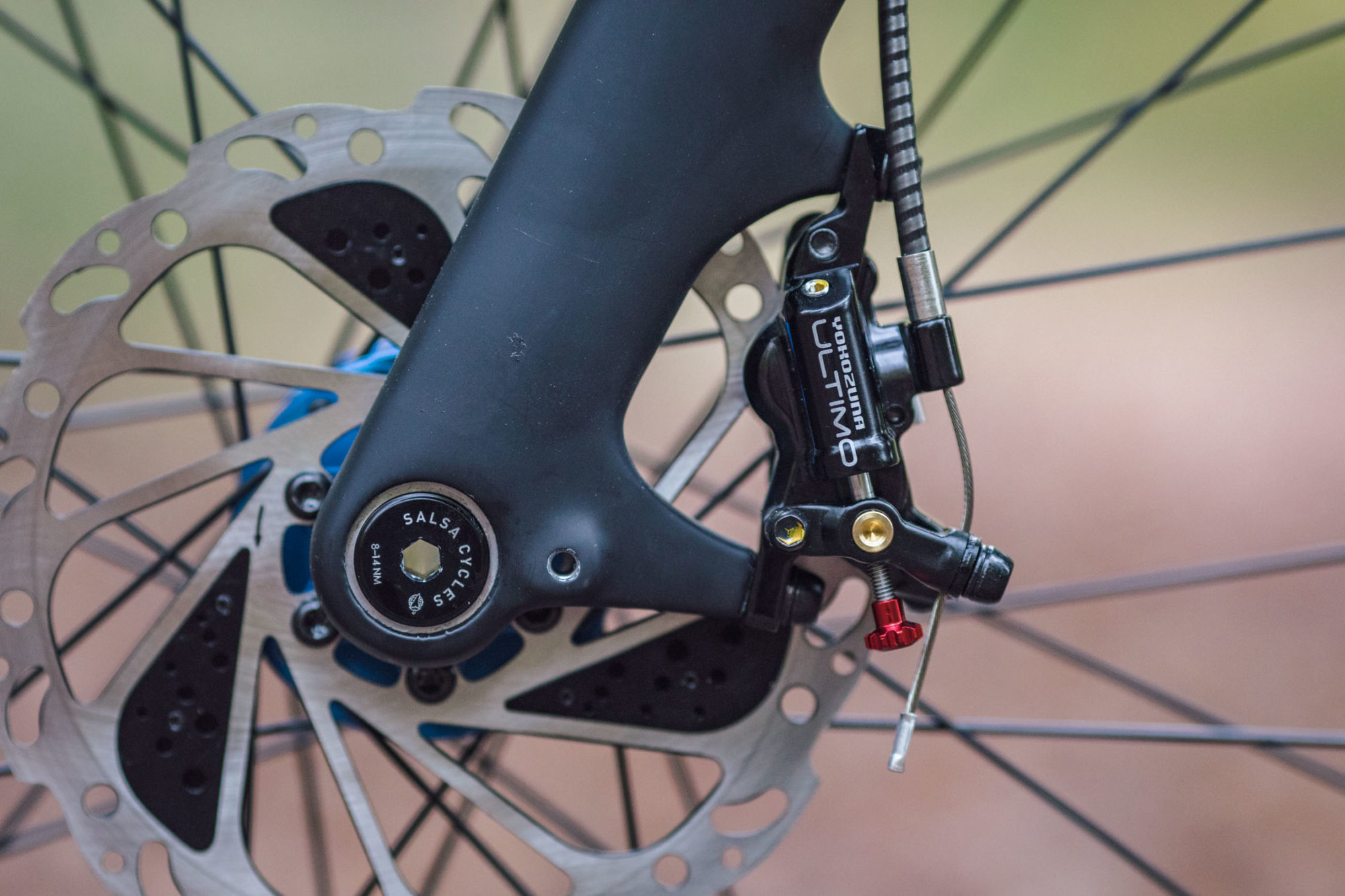
Ultimo In Use
I mounted this pair of Ultimos to a MOOTS Baxter I’m currently testing with SRAM Force AXS levers. Fortunately, SRAM still offers mechanical options in their main gravel/road groups, even in AXS. As mentioned, these could be used with any short-pull road lever, or even with PAUL Canti or CX MTB-style levers. The Ultimos were quite simple to install and adjusted very much like mechanical calipers. But unlike Klampers or BB7s, the Ultimos didn’t require multiple rounds of tweaking and readjustment to achieve the perfect setup. It was quite immediate, which always makes me happy.
Once on the trail, it didn’t take long to fall in love with these brakes. Based on my experience, they have all the stopping power full hydraulic brakes and feel quite similar to other road hydraulics I’ve used recently. The seemingly frictionless Reaction cabling and stout return spring in the caliper give them a smooth, high-quality feel at the lever. They also have a nice pull ratio, which is crucial when riding in the drops. My Enve G-Series handlebars—one of my favorites—have an angled drop, which allows the perfect hand placement for one-finger brake engagement while descending. That’s not always an option with mechanical brakes as the extra force needed to fully engage them can be extremely taxing on long descents. The Ultimos work perfectly, even in more technical descents.
For giggles, I’ve been taking this bike on a favorite local MTB loop, up Thrift Cove and down the Black Mountain Trail. While this trail isn’t too technical on a full-squish rig, it makes for some solid type-2 underbiking on a drop-bar bike. It’s moderately steep at times and has some rocky sections that keep you on your toes. It’s also been a great place to test these brakes. On long, steady, and dicey descents like this one, one-finger, in-the-drops braking is key.
While most of the testing I’ve done has been during fall and winter, I’ve yet to experience too much brake fade or other issues resulting from them overheating. The fact that they are closed hydraulic calipers means they don’t have a brake fluid reservoir to control the expansion of fluid at high temperatures. Theoretically, this could cause the entire caliper to overheat, resulting in brake fade, or even worse, failure. I’ve now taken the loaded and unloaded Moots down several long and relatively steep descents, including local >1,000-foot tracks such as Clawhammer Road, 476, Thrift, and Lower Black Mountain. So far, they’ve never gotten anywhere near hot enough to affect performance. Perhaps the cooling fin-equipped discs play a more significant role than I expected, or Yokozuna has mastered the dark arts of engineering wizardry to make this system work extremely well.
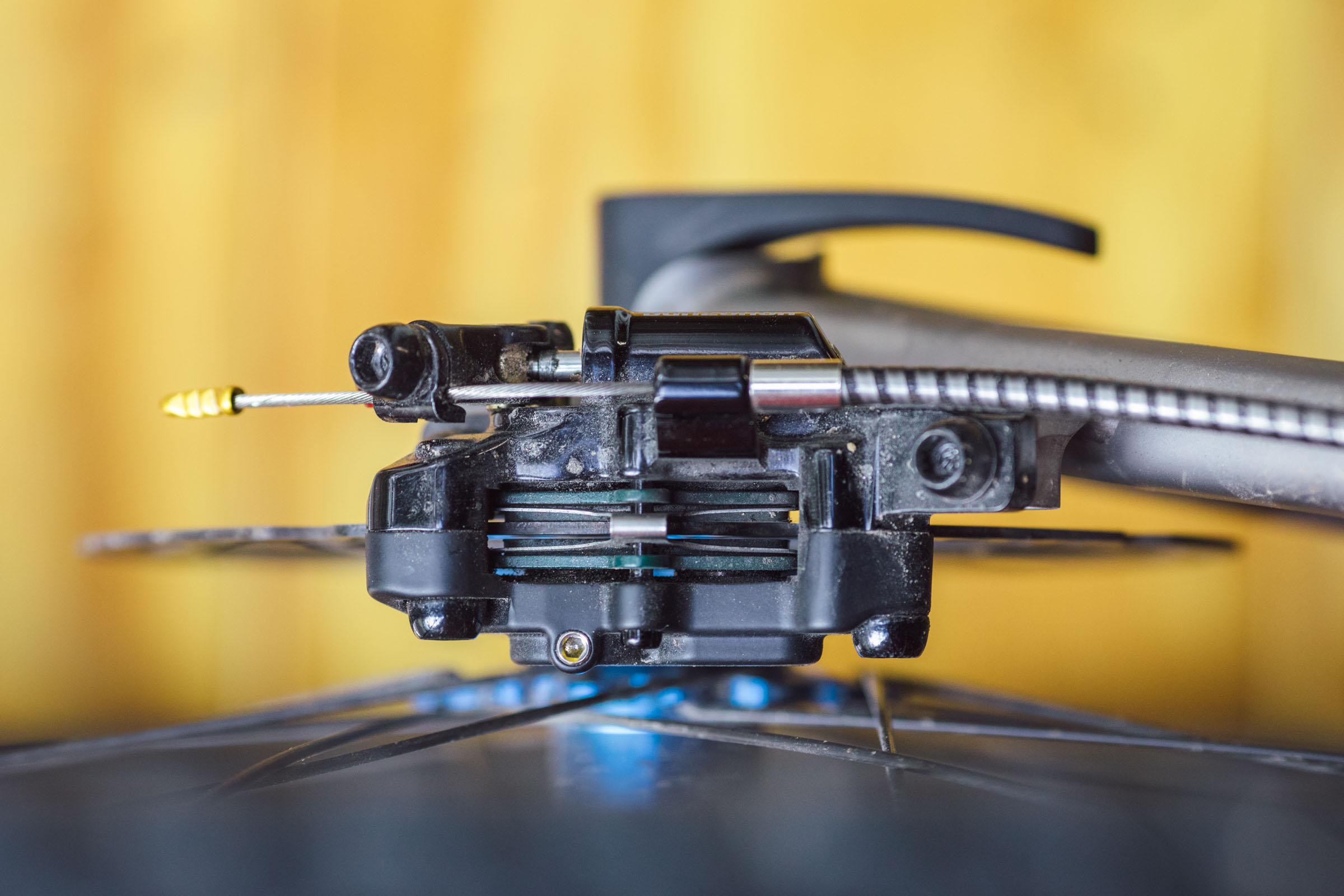
Pros
- Compatible with all cable-actuated road brake levers
- Closed hydraulic system (mineral oil)
- Four-piston design is pretty powerful, on par with other hydraulic brakes
- Includes Reaction Compressionless brake cable, which is quite nice
- Simple one-knob pad adjustment
- Uses Saint/Zee D-type disc pads
- Caliper is fairly light at only 139 grams
Cons
- Expensive when compared to other mechanical calipers and some hydraulic calipers
- Closed hydraulic calipers don’t have a fluid reservoir, which means the mineral oil could build up heat and cause brake fade or failure (although there has been no issue based on a fair amount of testing)
- No flat mount version (although it’s coming soon)
- Maybe not quite as powerful as regular reservoir/line hydros, but still miles ahead of mechanicals
- Caliper 74mm
- Rotor 160mm
- Weight 139g (caliper only)
- Mount International Standard/Post Mount Standard
- Price $199 (1 caliper/rotor/housing/mounts)
- Place of Manufacture Japan
- Manufacturer’s Details YokozunaUSA.com
Wrap Up
Considering the progression and near perfection of cable-actuated hydraulic dropper posts, I’m pretty excited about the prospect of more companies employing this methodology to the world of brakes. Obviously, there are some engineering hurdles that had to be overcome, such as heat regulation, but Yokozuna seems to have married the best of both worlds with the Ultimo. They have excellent stopping power and modulation, are easy to set up, and have been free from performance issues related to heat thus far.
They also offer a new level of reliability for hydraulic brakes that might even cajole luddite bike tourers and multi-country-bound bikepackers into making the switch. By sticking with a cable and housing based system you not only maintain reliability, but you don’t need a dedicated hydraulic brake lever. And Yokozuna claims these brakes should never need to be bled, which seems to be too good to be true. But my experiences with them have been promising; I haven’t had any issues and have pretty good faith in these brakes. I’ll be sure to update this should any issues arise.
Please keep the conversation civil, constructive, and inclusive, or your comment will be removed.






